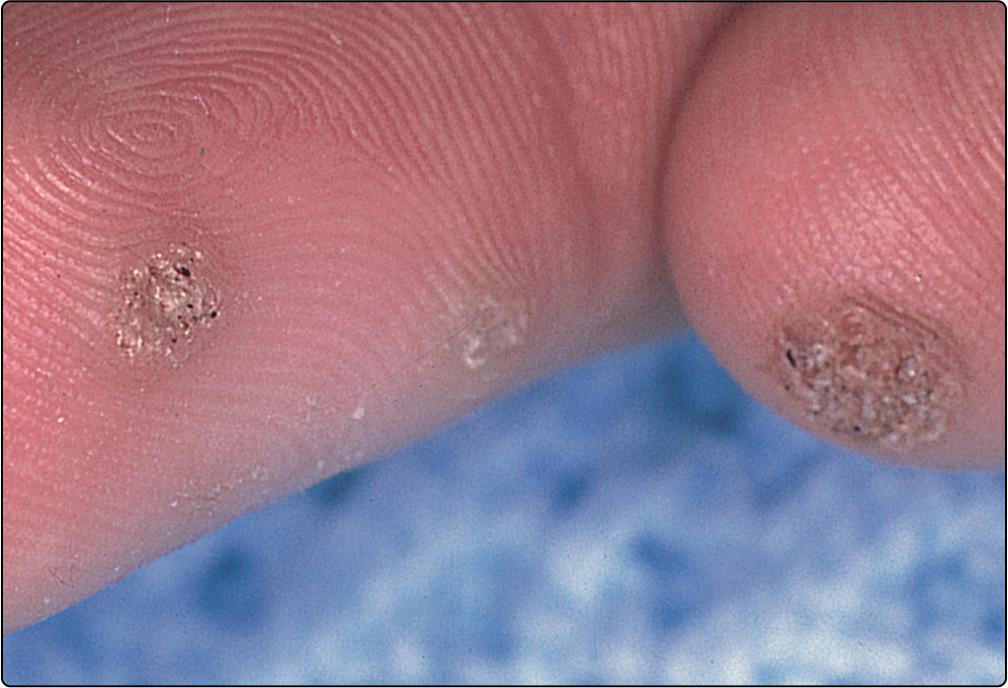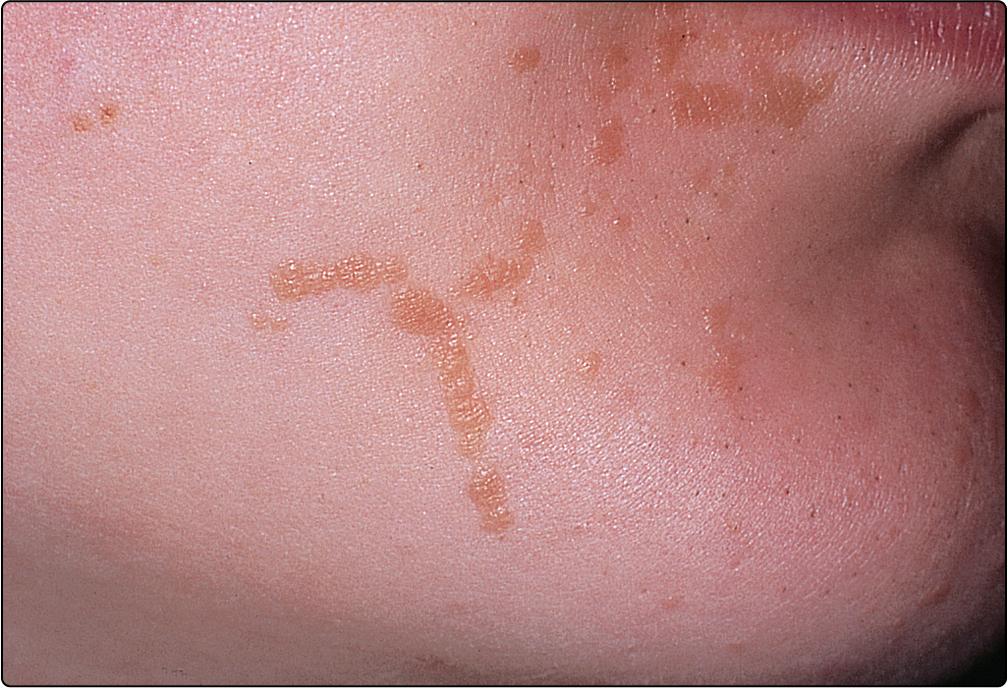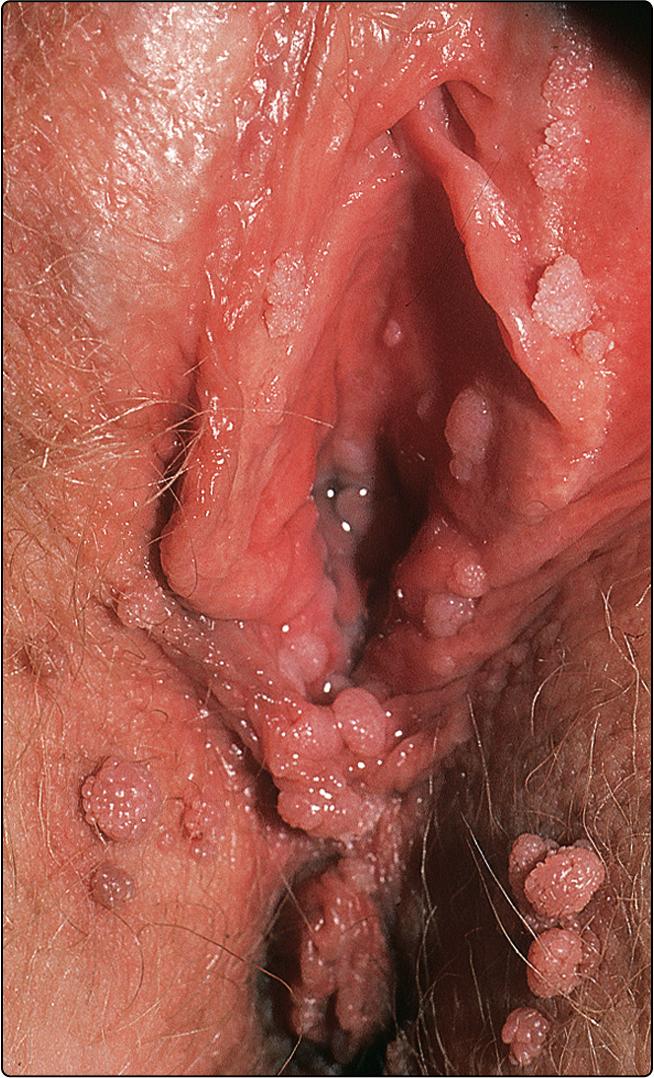Physical Address
304 North Cardinal St.
Dorchester Center, MA 02124
Unlike bacteria and yeasts, viruses are not thought to exist on the skin surface as commensals. However, studies in patients with viral warts have shown viral DNA in epidermal cells of seemingly normal skin next to warty areas.
Warts (verrucae) are common and benign cutaneous tumours due to infection of epidermal cells with human papillomavirus (HPV).
More than 100 subtypes of DNA HPV have been identified. The virus infects by direct inoculation and is caught by touch, sexual contact or at the swimming baths. Certain HPV subtypes are associated with specific clinical lesions, e.g. types 2, 27 and 57 with common hand warts; types 1, 2, 4, 27 and 57 with plantar warts; types 3 and 10 with plane warts; types 6 and 11 with anogenital warts. Anogenital HPV subtypes (e.g. 16 and 18) cause cytological dysplasia of the cervix, penis and perianal region, which may be precancerous. Immunosuppressed individuals, such as those with organ transplants, are particularly susceptible to viral warts (p. 70). Infection with the wart virus causes the epidermis to be thickened and hyperkeratotic. Keratinocytes in the granular layer show vacuolation.
Certain clinical patterns are well recognized:
Common warts . These present as dome-shaped papules or nodules with a papilliferous surface. They are usually multiple, and are commonest on the hands ( Fig. 29.1 ) or feet in children but also affect the face and genitalia. Their surface interrupts skin lines. Some facial warts are ‘filiform’ with fine digit-like projections.

Plane warts . These are smooth flat-topped papules, often slightly brown in colour, and commonest on the face ( Fig. 29.2 ) and dorsal aspects of the hands. They are usually multiple and resist treatment, but eventually resolve spontaneously, often after becoming inflamed. They can show the Koebner phenomenon.

Plantar warts . These are seen in children and adolescents on the soles of the feet; pressure causes them to grow into the dermis. They are painful and covered by callus, which, when pared, reveals dark punctate spots (thrombosed capillaries). Mosaic warts are plaques on the soles that comprise multiple individual warts.
Anogenital warts . In males, these affect the penis and, in men who have sex with men, the perianal area. In females, the vulva, vagina and perianal area may be involved ( Fig. 29.3 ). The warts may be small or may coalesce into large cauliflower-like ‘condylomata acuminata’. Proctoscopy (if perianal warts are present) and colposcopy (for female genital warts) are needed to identify and treat any anal or cervical intraepithelial neoplasia or invasive carcinoma (pp. 154–157). Sexual partners need to be examined.

Become a Clinical Tree membership for Full access and enjoy Unlimited articles
If you are a member. Log in here